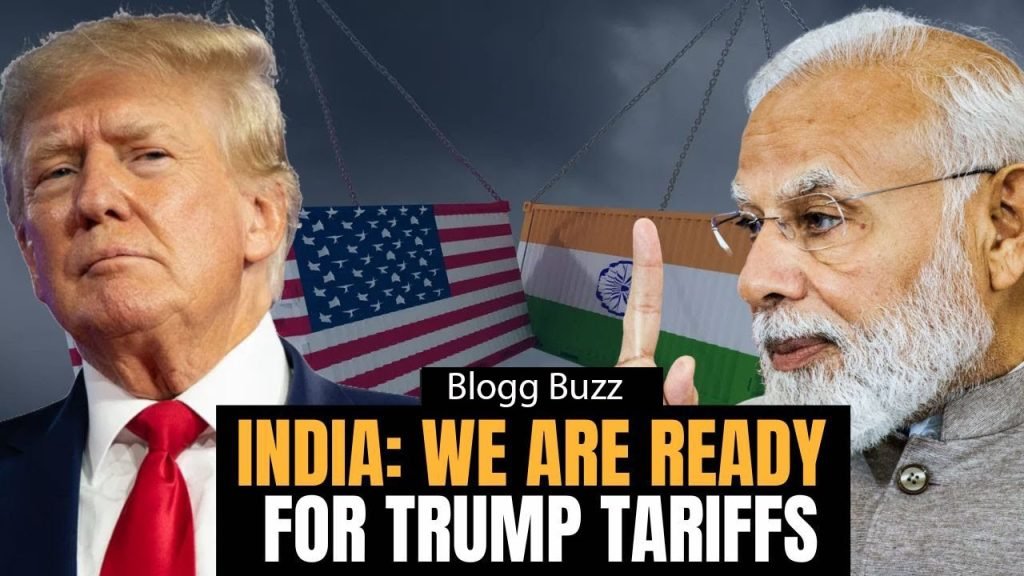Trump Imposes 50% Tariff on Indian Goods: Full Breakdown & List of U.S. Companies in India (Why Indians Should Think Before Using Their Apps)

In August 2025, under Executive Order 14329, the U.S. government escalated tariffs on Indian imports by an additional 25%, raising the effective rate to a staggering 50%. The White House cited India’s ongoing imports of Russian oil as a national security concern. Effective from August 27, 2025, this sudden move severely disrupts trade dynamics, dealing a heavy blow to India’s export-focused industries.
The Economic Times
The Washington Post
Reuters
This blog unpacks the details of the tariff hike, explores its broader economic impact, highlights key American companies active in India, and explains why some voices are urging Indian consumers to rethink using these brands.
1. What’s Behind the Trump Imposes 50% Tariff on Indian Goods?
Timeline & Legal Basis: Trump first imposed a 25% “reciprocal tariff” on July 31, 2025. A further 25% “penalty tariff” took effect on August 27, bringing the total to 50%
The Washington Post
mint
Justification: The U.S. claims India’s continued purchase of Russian oil indirectly supports Russia’s war efforts—thus invoking economic penalties based on national security under IEEPA
The Washington Post
The Indian Express
Scope: The tariffs affect nearly 55–66% of India’s $87 billion exports to the U.S.—particularly in textiles, gems & jewellery, shrimp, leather, auto components, chemicals, and furniture
The Times of India
Reuters
India Today
The Indian Express
Forbes India
mint
Exemptions: Critical sectors such as pharmaceuticals, electronics & semiconductors, energy products, and critical minerals are temporarily exempt
mint
2. Economic Fallout for India
Exports & GDP: Analysts foresee a 20–35% drop in affected export sectors, with GDP growth projected to fall by up to 0.8 percentage points annually
Reuters
The Economic Times
India Today
Forbes India
Business Standard
Job Losses: The gems & jewellery industry could lose $8 billion in exports, threatening 125,000 jobs in cities like Surat and Mumbai
Forbes India
Sectoral Collapse:
Seafood: With 40% of India’s seafood (notably shrimp) headed to the U.S., this sector could face a “doomsday-like blow”
India Today
Textiles & Apparel: Orders are being halted across production hubs like Tiruppur and Surat; many firms unable to absorb steep duty hikes
India Today
Gems & Jewellery: Exporters are considering relocating manufacturing to Dubai or Mexico to mitigate tariff barriers
India Today
Political Response: MPs like Shashi Tharoor have branded the tariffs as “double standards” and called for exploration of retaliatory measures
Business Standard
Strategic Reorientation: India plans to assist exporters, diversify to markets like Europe and the Middle East, and reduce reliance on the U.S. market
Reuters
India Today
The Guardian
The Times of India
3. Broader Trade Fallout & Diplomacy
Strained Relations: This marks one of the most severe trade disruptions between the U.S. and India in decades, affecting strategic cooperation including defense and diplomatic ties
Wikipedia
The Times of India
The Guardian
Diplomatic Tensions: India’s Ministry of External Affairs condemned the tariffs as “unfair, unjustified and unreasonable”, emphasizing its sovereign procurement choices for national energy security
India Today
Trade Talks Suspended: Trump stated no further negotiations would proceed until the tariff issue was resolved. Meanwhile, India is supporting exporters and pivoting to alternative markets
TIME
Reuters
Shift in Alliances: Rising tensions with the U.S. have accelerated India’s warming relations with China and Russia, counterbalancing geopolitical pressure
The Guardian
4. List of Prominent American Companies Operating in India
Many U.S. corporations are deeply embedded in India’s markets—some serving as lifelines for Indian consumers. Major names include:
Technology & E-commerce: Amazon, Microsoft, Google, Apple, IBM, Cisco, Adobe, Intel
The Business Scroll
True Scoop
Maps of India Business
Consumer Goods & Beverages: PepsiCo, Coca-Cola, Procter & Gamble, Amway, Johnson & Johnson
The Business Scroll
True Scoop
Maps of India Business
Financial Services: JPMorgan Chase, Citibank, American Express, Morgan Stanley
The Business Scroll
Maps of India Business
Retail & Logistics: Walmart (via Flipkart), McDonald’s, FedEx, Costco (new GCC in Hyderabad)
Reuters
Maps of India Business
IT Services / BPO / GCCs: Cognizant, HTC Global, Pangea3, Alvarez & Marsal, among others
Reuters
Media & Miscellaneous: Adobe, Emerson Electric, Ford, GE, Gillette, Honeywell, General Motors
Maps of India Business
5. Why Some Indians Are Urged to Reconsider Using U.S. Brand Apps
In response to the tariffs, public sentiment has shifted—calls are emerging to boycott major U.S. brands as a show of economic self-reliance:
Social Media Backlash: Voices on platforms urge rejection of American brands like McDonald’s, Coca-Cola, Amazon, and Apple, emphasizing homegrown alternatives
The Times of India
Economic Message: Switching to Indian alternatives supports local businesses, reduces foreign earnings drainage, and strengthens economic autonomy.
Strategic Signal: Abstaining from U.S. apps sends a clear message: India will not passively absorb one-sided economic aggression.
6. FAQs
Question Answer
Why impose 50% tariffs? US accuses India of trade imbalance and supporting Russia via its oil imports—hence invoking national security trade penalties.
Who suffers most in India? Textiles, gems & jewellery, seafood, leather, auto parts, and chemicals.
Are tech and pharma affected? Those industries are currently exempt from the new tariffs.
Why boycott U.S. brands? To weaken consumer dependence on American firms and strengthen indigenous markets as a form of protest.
What alternatives exist? Indian brands across retail, apps, food, and technology sectors are already emerging and gaining momentum.
Conclusion
Trump’s 50% tariff on Indian goods marks an unprecedented escalation in U.S.–India trade tensions. The economic consequences are significant—export losses, job cuts, pressure on GDP, and a strategic realignment away from overdependence on American markets. Meanwhile, American firms remain deeply entrenched in India’s business ecosystem.
For Indian consumers, the growing push to boycott U.S. brand apps isn’t just about protest—it’s about reclaiming economic agency and nurturing local alternatives.

